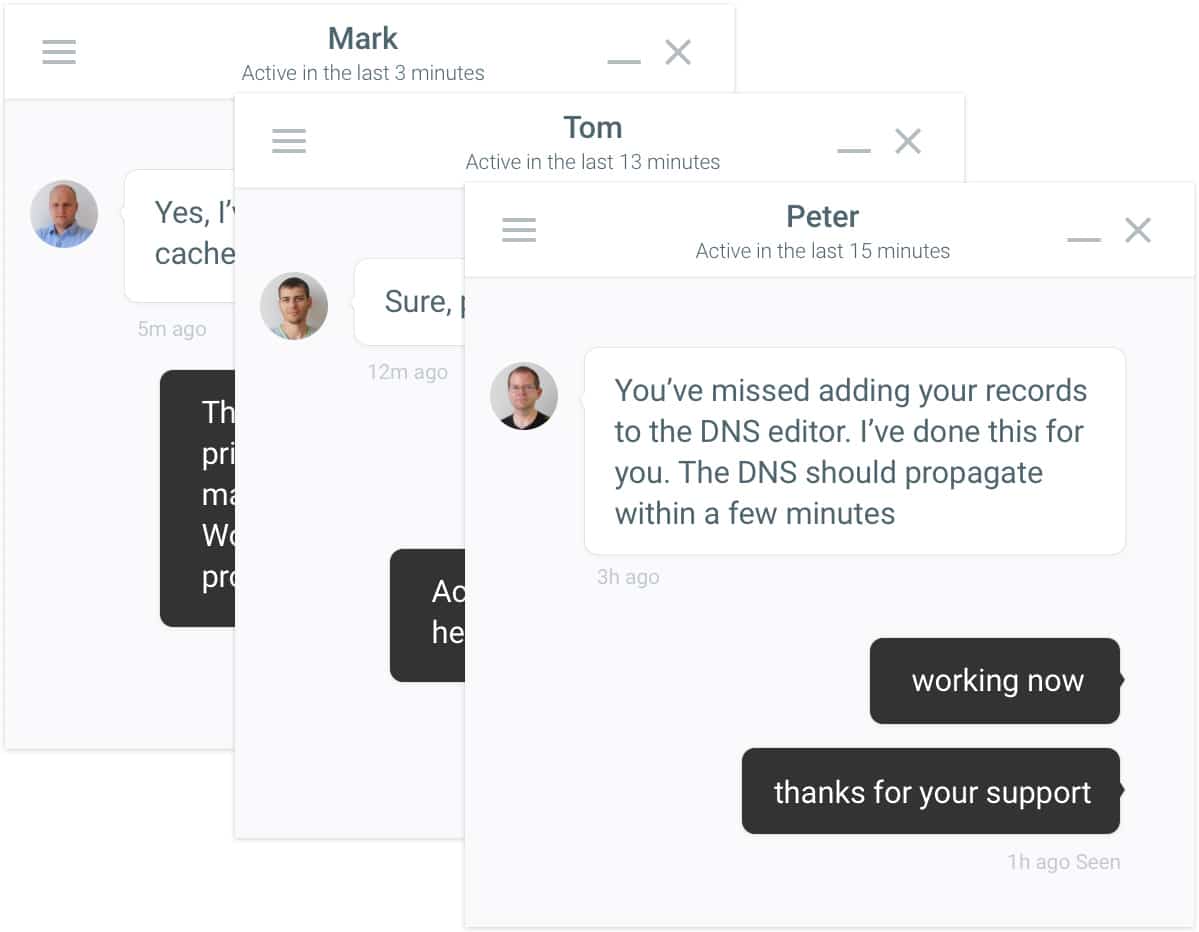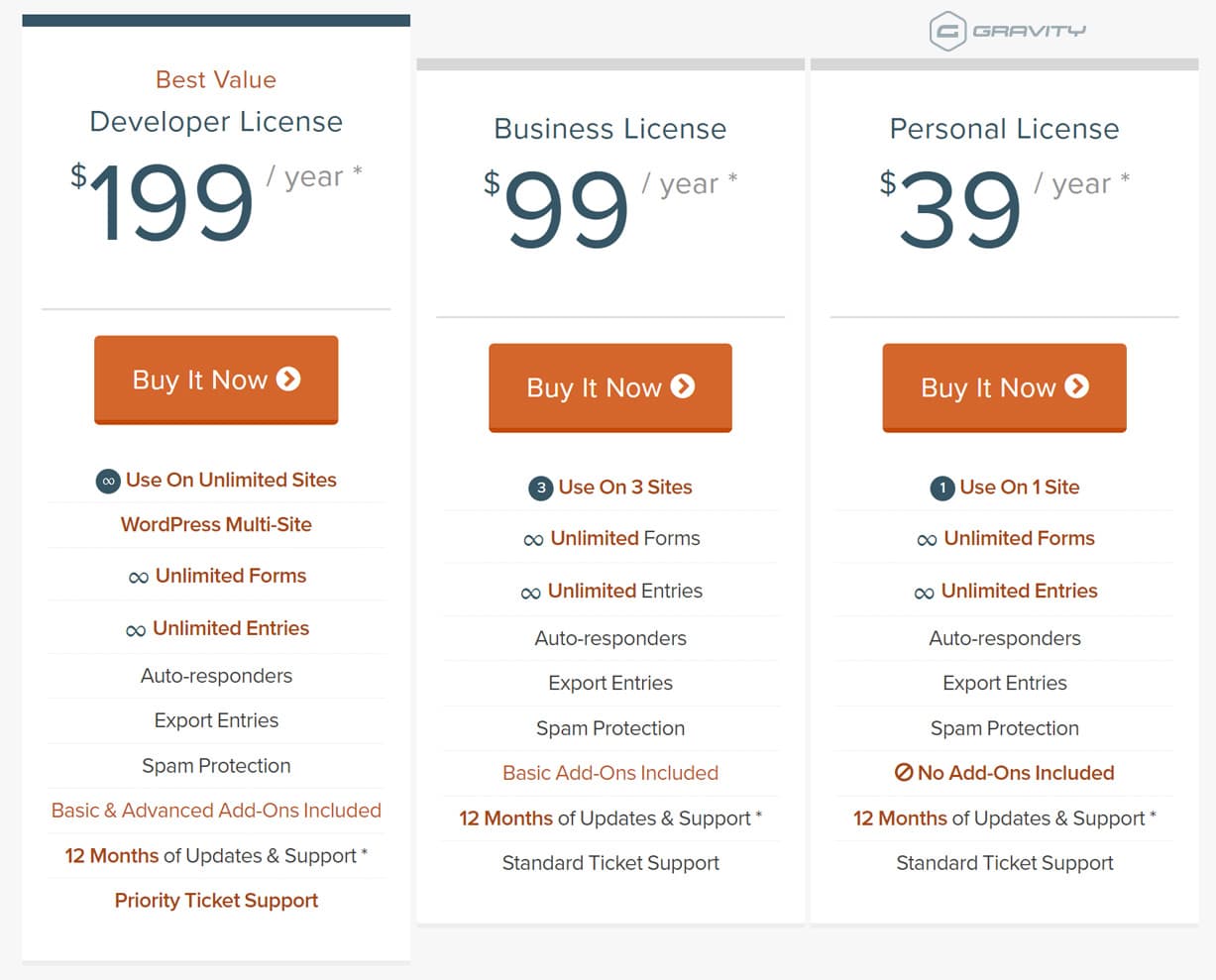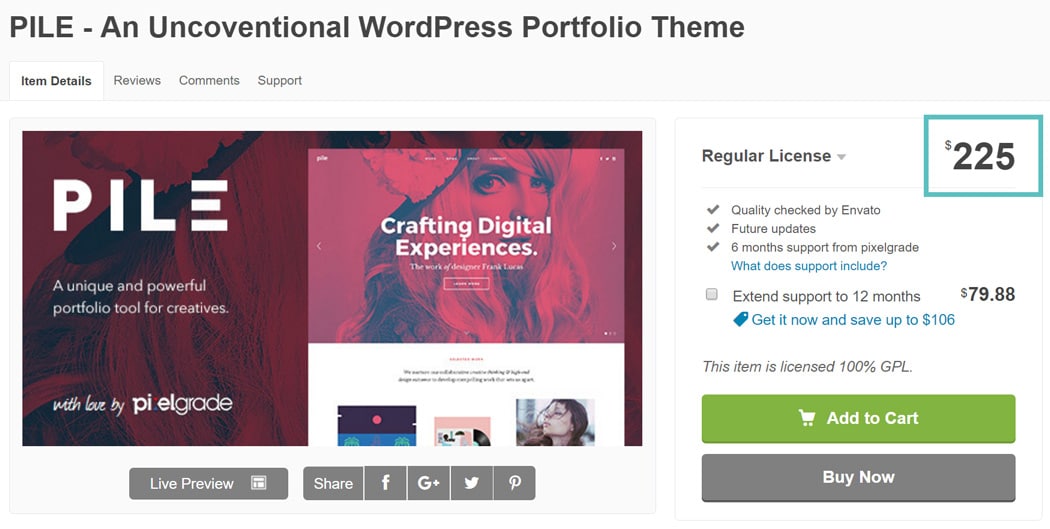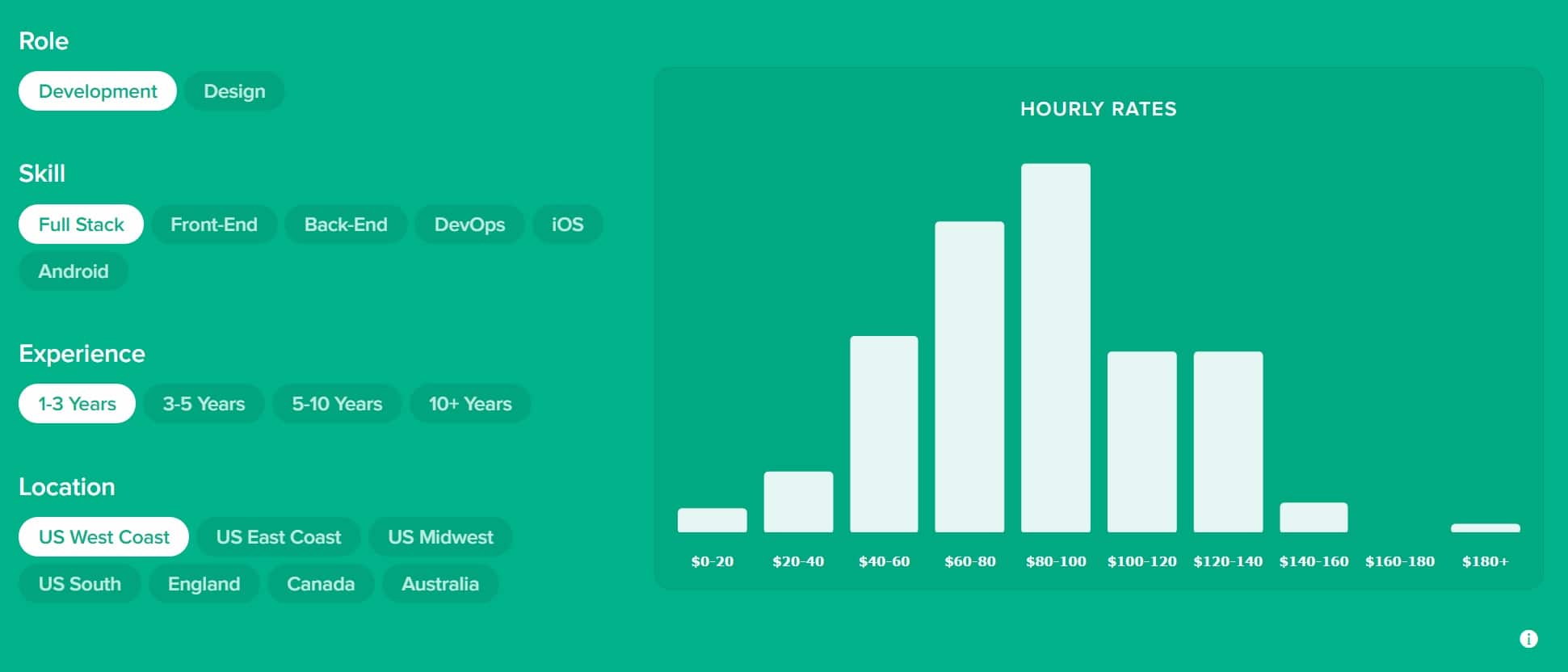5 Tips on How to Price a Product or Service For WordPress
- Category : WordPress
- Posted on : May 27, 2017
- Views : 1,992
- By : Tadashi P.

With every new company, startup, or product launch comes the ultimate question, how much should you charge for your WordPress product or service? Where do you even begin to set a baseline? This is not something to take lightly and you should definitely do your market research for your target audience, as well as check out what your competition is doing. Being that we offer a WordPress service here at Host SEO, as well as having members of our team that sell premium WordPress plugins, we want to share a few recommendations on what we have learned on how to better price a product or service for WordPress.
How to Price a Product or Service for WordPress
One of the WordPress market’s biggest advantages can also be one of your biggest hurdles when launching a product or service. And that is the sheer size of WordPress on the web. According to W3Techs, As of January 2019, WordPress now powers over 32% of all websites on the internet. And it has been growing at a steady pace, up from 26% in March 2016. However, due to the sheer size of WordPress, this also means it is a very competitive space. More than likely, no matter what WordPress product or service you are launching, there are probably 3-4 other’s already doing the same thing.

So breaking into the WordPress market can definitely be a challenge, and if you get the pricing wrong, this could ultimately be why your business fails. If you price too high you might not sell anything, but if you price too low, it might end up costing you more in support and upkeep than the revenue you bring in. One of the biggest recommendations we always make is don’t price your product or service too low. Below we’ll go into some reasons why this is important and some advantages of going this route.
1. Put a Value on Your Time
Whether you are a WordPress developer charging by the hour or trying to price out a hot new WordPress plugin, the very first thing you should consider is the value of your time. As they say, “Time is money…” And this is very true. For a freelancer, one factor in this might be how fast are you compared to the competition? If you can crank out 2x the amount of code as your colleagues, then your time is definitely worth more to a potential customer. If you are selling a product, you should ask yourself how much time did you invest into creating the product? Did it take 2 years to develop, or 2 weeks?

Morten Rand-Hendriksen, a senior staff author over at Lynda.com, wrote an excellent article back in 2014 titled “The Value of Time – How to Charge What You’re Worth.” In it, he asked his social media followers the following question.
If I were to pay you to stand still and alone and do nothing for an hour, how much would you charge?
The responses he received varied from $40 to $800, and the average came out to $100/hour. The reason he asked this was to see what people thought their time was worth with no other factors involved. He did this to simply prove a point, that people greatly value their time, but have a tendency to undercut themselves. This could be for those of you freelancing or when evaluating what you think the time investment in your product or service is worth. Always put a value on your time.
2. Always Budget Extra Time for Support
Everything always seems to come back to time, as there is never enough of it in a day. When you are delivering a WordPress product or service you should always budget extra time for support. Support almost always requires more time and effort than you can imagine or even plan for. If you estimated 20 hours of support for that new shiny plugin you just launched, it is safe to say you should probably double that amount. Being a managed WordPress host, we know this better than anyone here at Host SEO. A majority of our time is spent helping customers and solving problems.

I don’t usually dive into the first person, but today I will as I have some personal experience with this myself. My brother and I developed and launched a premium WordPress coupon plugin earlier this year. We had plans from the very beginning to have an extensive knowledge base where people could find their own answers. The big mistake we made was not having all the knowledgebase articles written when we launched the plugin. This resulted in a lot of emails from customers asking questions that we didn’t anticipate and could have easily avoided. We ended up writing 25+ docs and the emails pretty much stopped altogether.
We also have an extensive WordPress knowledgebase here at Host SEO and the main purpose is to cut back on time needed for support. But remember, writing the knowledgebase articles also takes time. Whether you are answering customers support tickets, taking calls, or interacting over live chat, always budget extra time for support. You will save yourself many headaches down the road!
One tip: If you are selling a WordPress plugin, don’t ever market it as a one-time purchase. Remember, that you still have to spend time supporting it. A very common method used is to sell the license as a yearly renewal, which includes 12 months of support and updates. Below is an example of the pricing on the popular Gravity Forms WordPress plugin. By pricing this way you can ensure that you don’t lose money on support.

However, if you are thinking about pricing something with a lifetime license, check out these tips from Freemius on how to do it the right way.
3. Don’t Underestimate Your Service or Product
The third tip is to never underestimate your WordPress service or product. If you spent time creating something amazing, then this in itself has value. You should never sell yourself short. By actually raising your price you can sometimes attract a different crowd and or quality of customers. There are people that see the value in paying more for something that has superior quality and customer support. Envato recently opened up ThemeForest to allow authors to break out of the typical $35-65 price range which they have relied upon for years. Ben Chan, executive General Manager stated the reason:
We’ve also come to understand that fixed, Envato-controlled pricing works as a disincentive for many authors and limits the community’s ability to respond to market trends. By moving to an author-driven model, we expect to see a greater range of high quality items, more creative pricing strategies, increased responsiveness to trends and happier customers.
Shortly after that announcement, new themes suddenly emerged with much higher pricing, such as the Pile theme which now sells for $225.00.

The developer of this theme stated in a comment over on WPine.me:
The type of customers that we will attract with this new price, will also allow us to go even further and maintain a closer relationship with the people that are eager to join our journey. We’re not seeking random clients, we’re willing to consolidate and empower a relevant community for our creative products.
So you should ask yourself, what type of customer do you want to attract? Remember, large volume and low prices is usually accompanied by more time needed for support. So it can be good to find a middle ground and really think about who you should be selling to.
If you are a WordPress developer or freelancer, Bonsai has created a great chart based on their contract data to help better estimate your hourly rates. Based on data from over 30,000 freelancers they have noticed some interesting findings such as:
- Freelancers in the US west and east cost earn more than those in the midwest and south by around 10%.
- Developers earn about 30% more than designers across experience levels and geographies

4. Raising Prices After Launch Can Sometimes Be Advantageous
Perhaps you already launched your WordPress product and or service. Well, sometimes raising prices even after the fact can be advantageous. Neil Patel wrote a great article titled “Don’t Be Afraid of Raising Your Prices. Here’s Why.” In it, he raises a lot of good points of which some are summarized below:
- Raising prices can be more effective than selling more products
- Weeds out the not-so-good customers
- Allows you to distinguish yourself from the competition
- Your prices reflect your product/service quality

Of course, there are some negatives to this as well, but it is important to weigh both the pros and cons.
I am going to switch back to the first person again as I have another personal example that is very applicable here, even though it is in a different niche. During College, I used to do computer repair house calls. When I first started I was charging $50/hour. I started dabbling in some other lines of work such as internet marketing and suddenly I found myself out of time. I no longer had time to support all my regular clients. So I ended up raising my prices to get rid of some of the house call clients.
I raised my prices from $50/hour, to $75, and finally settled upon $125/hour in which some clients finally started dropping off, leaving me only with the higher quality ones. In the end, I had raised my prices by a whopping 150% and was now making more money with less work. And my remaining clients were happy to pay that as the quality of work I was doing was unmatched, even with 10+ other computer repair shops in the area. So raising prices can sometimes be a great strategy, both for products and service.
Shannon Malone, director of product strategy at Warby Parker says it best:
Value is a price-to-quality ratio, and we always try to provide value to stay competitive.
5. Use Data-Driven Pricing Techniques
When it actually comes down to the nitty-gritty part of setting a price for your WordPress product or service there are a few things to keep in mind. First, what is your competition doing? As we mentioned above, raising prices can be a good thing, but if there is another product or service with the same quality as yours out there, then you should probably think about matching or beating their prices. Or if you can’t beat their price, find a way to add value to your product or service.
Another way to help determine pricing if you are just starting out is to crowdsource it. Run surveys with your target audience and find out what they are willing to pay. You can easily do this with a quick FB or Twitter ad. Nothing it says it better than your customers. And remember, the people that don’t see value in something of high quality are usually in the minority. Look at Apple, for example, their products are not cheap by any means, and yet they do billions of dollars in revenue every year.
Expensive is a good thing, not an automatic negative. People like to own expensive things. They appreciate the sense of status and worth that they receive from being able to purchase and own a product that cost a lot of money. – Kissmetrics
And when it comes down to actually displaying the prices on your WordPress site use round numbers and get rid of the dollar signs. According to a survey run by strategy+business, 57 percent of consumers picked round, whole-dollar amounts ending in zero, and an additional 4 percent chose to pay round, half-dollar amounts.
Summary
So remember, when it comes to ways on how to price a product or service for WordPress it is important to put a value on your time, always budget extra time for support, don’t underestimate yourself, possibly raise your prices, and use data-driven pricing techniques and research. Have any other good pricing tips for the WordPress space? If so, we would love to hear them below!
Categories
Subscribe Now
10,000 successful online businessmen like to have our content directly delivered to their inbox. Subscribe to our newsletter!Archive Calendar
| Sat | Sun | Mon | Tue | Wed | Thu | Fri |
|---|---|---|---|---|---|---|
| 1 | 2 | 3 | 4 | 5 | ||
| 6 | 7 | 8 | 9 | 10 | 11 | 12 |
| 13 | 14 | 15 | 16 | 17 | 18 | 19 |
| 20 | 21 | 22 | 23 | 24 | 25 | 26 |
| 27 | 28 | 29 | 30 | 31 | ||
Recent Articles
-

Posted on : Jul 25
-

Posted on : Jul 07
-

Posted on : Apr 07
-

Posted on : Mar 19
Optimized my.cnf configuration for MySQL 8 (on cPanel/WHM servers)
Tags
- layer 7
- tweak
- kill
- process
- sql
- Knowledge
- vpn
- seo vpn
- wireguard
- webmail
- ddos mitigation
- attack
- ddos
- DMARC
- server load
- Development
- nginx
- php-fpm
- cheap vpn
- Hosting Security
- xampp
- Plesk
- cpulimit
- VPS Hosting
- smtp
- smtp relay
- exim
- Comparison
- cpu
- WHM
- mariadb
- encryption
- sysstat
- optimize
- Link Building
- apache
- centos
- Small Business
- VPS
- Error
- SSD Hosting
- Networking
- optimization
- DNS
- mysql
- ubuntu
- Linux













